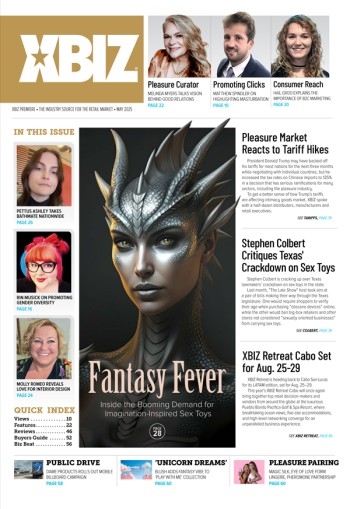Amidst the cacophony of the digital age, as countless brands vie for attention, ensuring your brand or store’s survival and success means crafting a narrative that customers can identify with, one that imbues your brand with life and personality. The essential tool for accomplishing this is not some new tech innovation, but the ancient art of storytelling.
Storytelling in branding can transform mere transactions into rich, emotional experiences that resonate deeply with your target audience. It’s not just about selling products; it’s about humanizing your brand so that you create not just customers, but loyal ambassadors. This article will delve into weaving compelling narratives that foster that kind of genuine connection, so that your brand not only stands out, but also stands for something in the hearts and minds of your customers.
Successful brand storytelling finds harmony between engaging the audience with a compelling narrative and seamlessly integrating the brand’s message.
The Psychology of Storytelling in Marketing
The power of storytelling is deeply rooted in human psychology. Our brains are hardwired to respond to narratives, which allow us to process complex information coherently, often invoking a strong emotional response. This emotional resonance is the cornerstone of effective marketing. When a story stirs emotions, it forges a bond of empathy and trust between the listener and the storyteller. Brands that master this kind of storytelling can transform their messages into meaningful experiences that customers are drawn to and remember.
The emotional journey a story takes us on activates various parts of the brain, including those responsible for emotional reactions and memory formation. This enhances brand recall, meaning that when customers connect emotionally with a brand’s story, they’re more likely to remember that brand over a competitor’s. This enduring effect is why storytelling is not just a marketing tactic but a fundamental component of memorable branding. It turns passive listeners into active participants whose experiences and emotions become intertwined with the brand’s narrative, paving the way for long-lasting customer relationships.
Crafting Your Brand’s Story
Crafting your brand’s story is an introspective journey that begins at the heart of your company: its core values and mission. These foundational elements are the soul of your brand’s narrative, anchoring every chapter of your story and ensuring that it rings true and feels authentic. Like any compelling protagonist, your brand also needs a persona that mirrors the aspirations and challenges of your audience, allowing them to see a reflection of themselves within your narrative. As you sculpt this persona, it becomes the guiding voice that resonates across your customer base, creating a familiar and trusted character they can root for.
With your values set and persona defined, it’s time to weave the narrative arc. This is where your brand’s messaging comes to life, evolving from mere statements to a saga of challenges, triumphs and transformations. This arc doesn’t just relay information; it invites customers into a story in progress, where every product release or service update is a new chapter that customers are eager to see unfold. This approach allows each touch point with customers to advance the plot and deepen their connection to your brand’s ongoing story.
Elements of an Effective Brand Story
At the heart of a compelling brand story lies authenticity, which ensures your storytelling is relatable and resonates with your audience on a human level. It’s the essence of trust and the foundation upon which loyal relationships are built. Then comes the age-old narrative device: conflict and resolution. Every engaging tale needs a hurdle the hero overcomes, reflecting the customer’s challenges and aspirations. This structure is pivotal as it keeps the audience invested in the journey and leads to a satisfying payoff, paralleling your brand’s solutions. Also integral to this journey are well-crafted characters embodying the brand’s persona, who guide your audience through the story. They humanize your brand, turning abstract concepts into relatable narratives. Complementing the prose of storytelling is the poetry of visuals. Through images, videos and thoughtful design, visual storytelling not only captivates but also helps customers retain your brand’s message, creating a multisensory narrative that is potent and memorable. Together, these elements craft not just a story but an experience where every customer is an observer and participant in your brand’s unfolding epic.
Examples of Storytelling in Online Brands
A well-crafted narrative can have a profound impact on a brand’s success. For example, Airbnb evolved from a simple room-sharing service to a global community of travelers connected by stories of hospitality and adventure. Their narratives often feature hosts and travelers emphasizing not just the transactions, but the unique experiences the platform facilitates. Warby Parker, another storytelling virtuoso, disrupted the eyewear industry by offering an alternative to overpriced eyeglasses, and by sharing customer stories that highlighted individual style and the brand’s social-consciousness initiative of providing a pair to someone in need for every pair sold.
From these case studies, a clear lesson emerges: storytelling that focuses on shared experiences, community impact and the human element behind the brand resonates deeply with consumers. To apply these lessons to your brand or store, identify your customers’ unique interactions and moments with your products, and build your brand’s story around those genuine experiences. Encourage and share customer testimonials that underscore these moments, and make sure your brand’s mission is evident in every story you tell, creating an engaging narrative that embodies the values your brand stands for.
Integrating Customer Stories Into Your Brand Narrative
Integrating customer stories into your brand narrative is a powerful strategy to amplify authenticity and foster community. Encouraging user-generated content and testimonials turns customers into storytellers and their experiences into extensions of your brand’s narrative. This approach not only showcases real-life applications of your products or services but also leverages social proof, as prospective customers see themselves in the shared experiences of others, making the brand’s promises more tangible and believable.
To harness this, feature customer testimonials prominently on your platforms and create campaigns inviting customers to share their narratives, whether through reviews, social media posts or video diaries. By celebrating these stories, you create a mosaic of diverse yet unified voices that tell the larger story of your brand. Moreover, this collective storytelling is a magnet for like-minded individuals, effectively building a community around your brand story. This community becomes a self-sustaining source of engagement, trust and loyalty, as members see their individual stories as part of a more significant brand journey — one where they play an integral role, not just as customers, but as characters in an ongoing, shared narrative.
Pitfalls to Avoid in Brand Storytelling
Brand storytelling comes with challenges that require careful attention. Paramount among these is the trap of inauthentic or disconnected narratives, which can quickly erode trust and alienate an audience. Consumers today are adept at discerning genuineness from marketing speak, and a story that feels contrived or insincere can do more harm than good.
Additionally, brands must tread lightly on the complex terrain of cultural sensitivities. In an interconnected world, a misstep in this area — such as resorting to stereotypes or cultural appropriation — can lead to significant backlash and damage a brand’s reputation. It is essential, therefore, to engage in thorough research and adopt an inclusive approach when telling stories that cross cultural lines.
Finally, there is a delicate balance between promotional content and storytelling. Too much focus on selling can overshadow the narrative, making the story feel like a guise for advertisement. Successful brand storytelling finds harmony between engaging the audience with a compelling narrative and seamlessly integrating the brand’s message, ensuring that the story leads to natural affinity and loyalty rather than overt self-promotion.
Storytelling is a strategic linchpin in humanizing your brand, thereby rising above the din of the marketplace’s bustling roar to create a symphony of meaningful connections. Harness the art of storytelling to infuse authenticity, engage emotions and build a community. A story that endures in the collective memory of your customers will foster loyalty that lasts.
Joe Powell is a graphic designer, brand creator and B2B and B2C marketing professional. For over 25 years, he has held remote contract roles in which he specializes in best-practice tactics for visual/brand identity and product development.







